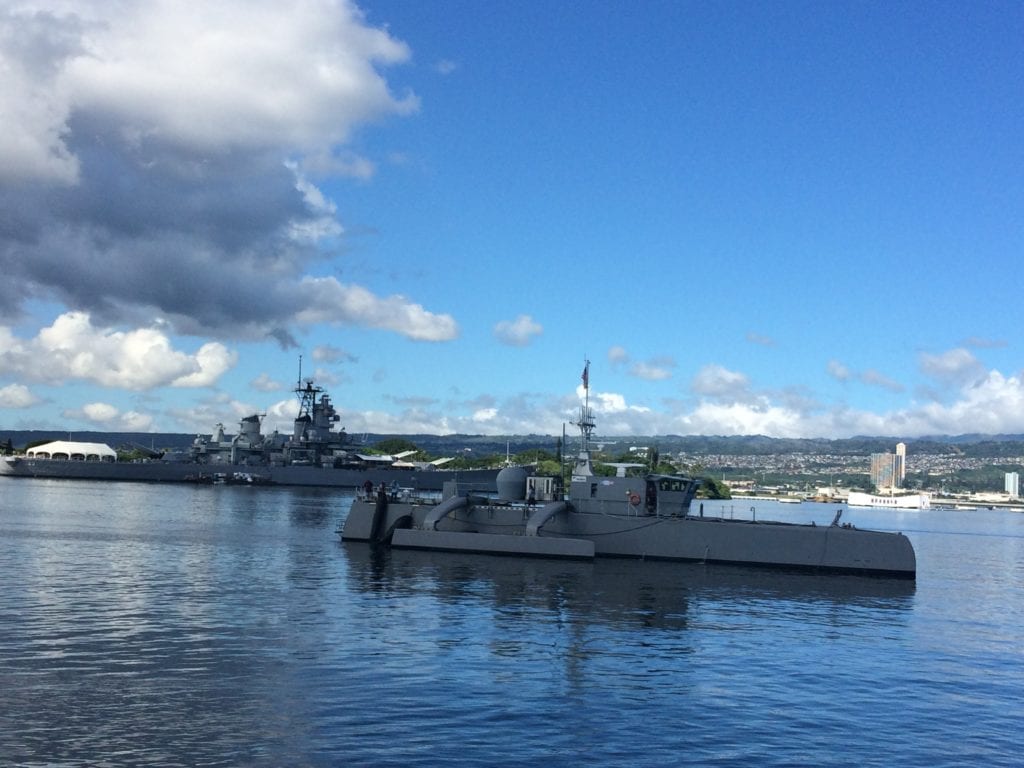
ARLINGTON, VA. — The Navy plans to use extensive land-site testing for components and systems of the Medium Unmanned Surface Vessel (MUSV) in order to wring out risk in developing and integrating systems, the admiral in charge of developing unmanned vessels said.
The Navy is committed to addressing the congressional concerns about, for example, the reliability of machinery of USVs, “to make sure that we go in this measured way of rigorous systems engineering approach,” said Rear Adm. Casey Moton, program executive officer, Unmanned and Small Combatants, speaking April 13 in an Unmanned Systems Defense webinar of the Association of Unmanned Vehicle Systems International.
“Along with our prototypes that are out testing now, we’ve been maturing our execution plans,” Moton said, noting that the program engineers are “working on hybrid reliability and hull, mechanical and electrical [HM&E] equipment.
“We are now going to do our testing at sea, but we are going to do land-based testing of our HM&E equipment for a Medium USV and we’re getting plans ready for Large USV and all of those aspects,” he said.
Moton said a second pillar of the programs is for C4I [command, control, communications, computers and intelligence], “making sure that we carefully test the C4I system that is going to allow our unmanned vessels to be a part of this hybrid fleet. A lot of that is about [Project] Overmatch, but also be a principal component of Overmatch.”
A third pillar of the unmanned systems focus is combat systems, adapting them for use on autonomous vessels. Weapons firing will always be performed by a human in the loop, he said.
A fourth pillar, a common control system, is maturing and is to be something that can be designed once and then scaled up for fleet use.
“Our initial prototypes were systems that we bought from industry,” Moton said. “We are all the time maturing that into a common system that is going to go in our program of record.”
The fifth pillar is perception. “We have a very rigorous plan we’re already executing with our prototypes, testing out the perception systems … and the autonomy we need to do.” he said.
The sixth pillar is prototyping.
“We’re getting after the sea-based testing and land-based testing, that particularly has been a concern of Congress, and as we go forward, we’re going to articulate that more clearly, but, in each one of these, we’re going very carefully, doing the building blocks, in a good systems engineering manner,” he said.
“We’re solving it [any given technological challenge] once. We’re going to scale it up like the framework [Unmanned Campaign Plan] talks about, [so that] we’re not having to learn the same lessons over and over again. Even though we have a set number of prototypes, we are developing systems that are going to apply across the fleet.”
- SECNAV Advocates Increased Legal Immigration to Increase Shipbuilder Workforce - April 23, 2024
- Insitu Going Strong at 30, Focusing on Maritime Operations - April 8, 2024
- Navy Awards Boeing Additional Funds for MQ-25 Drones for Testing - April 3, 2024






